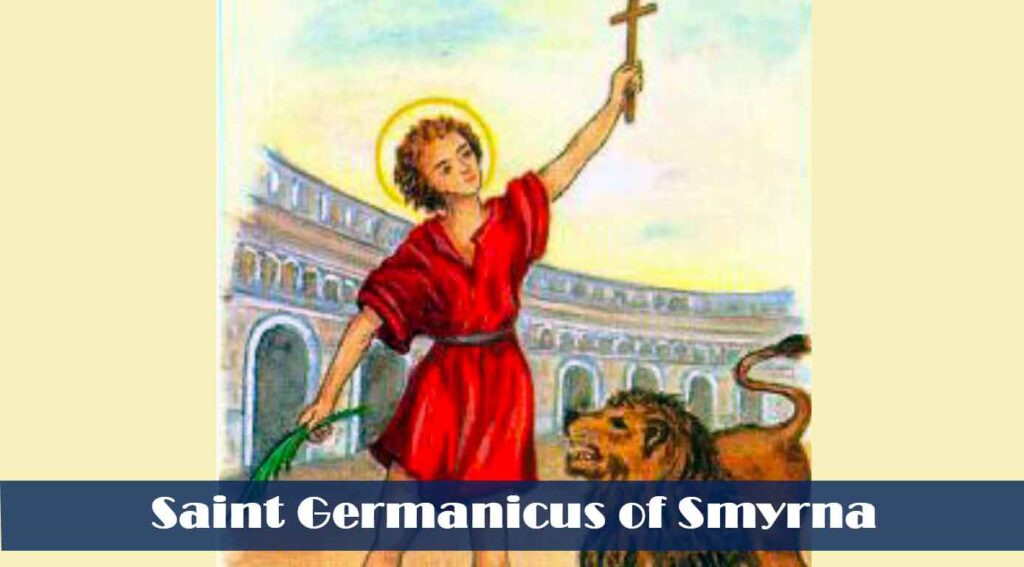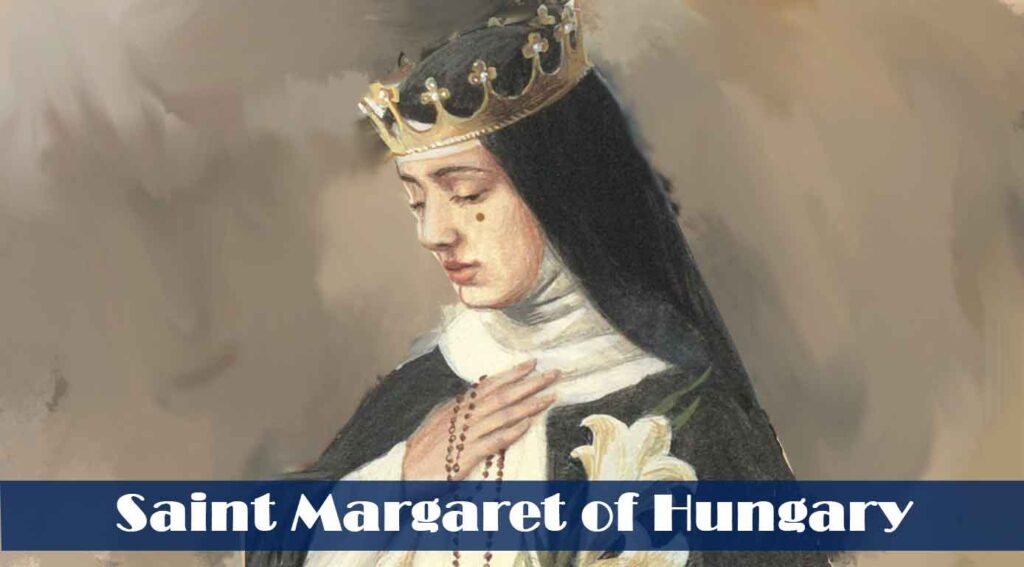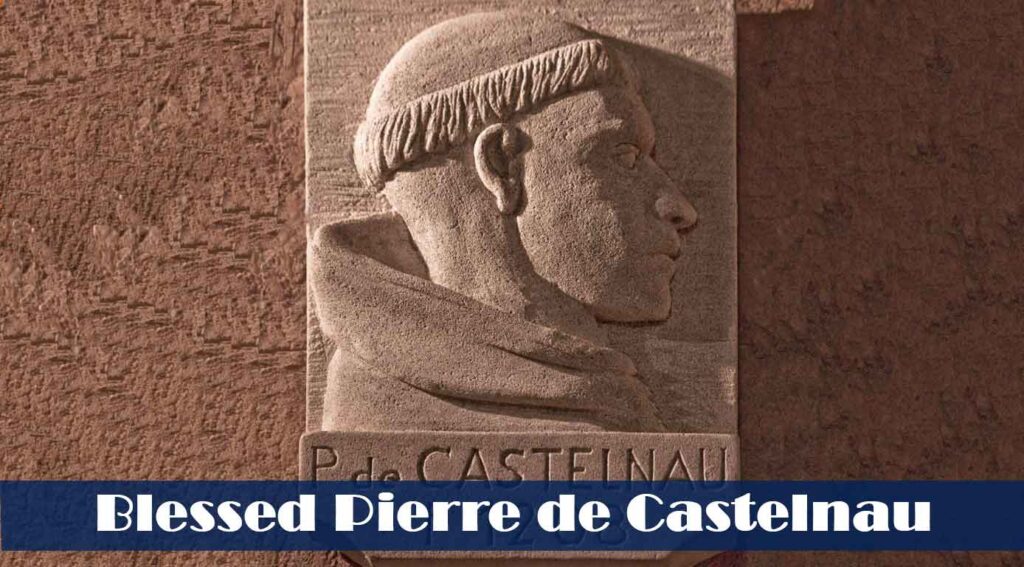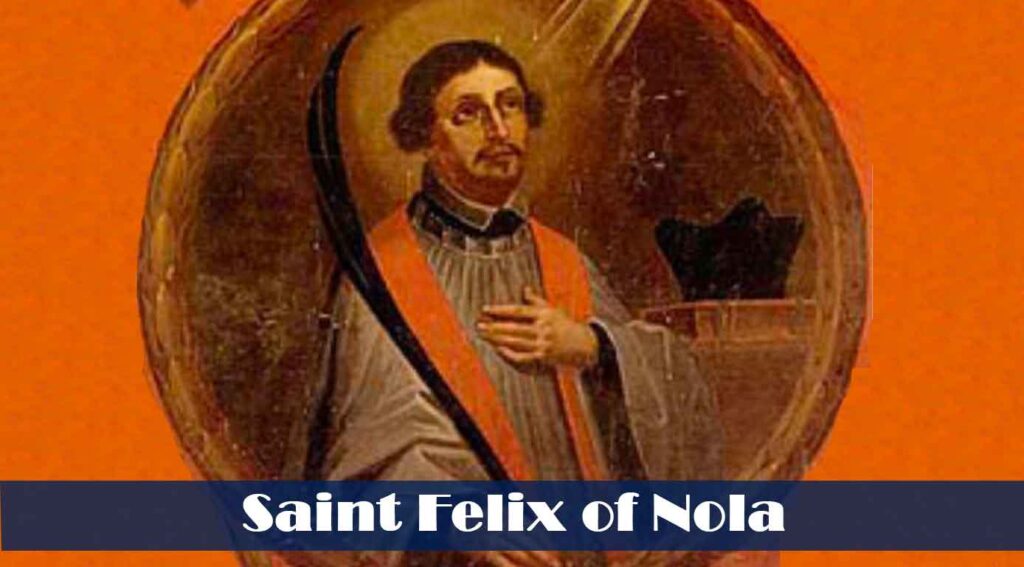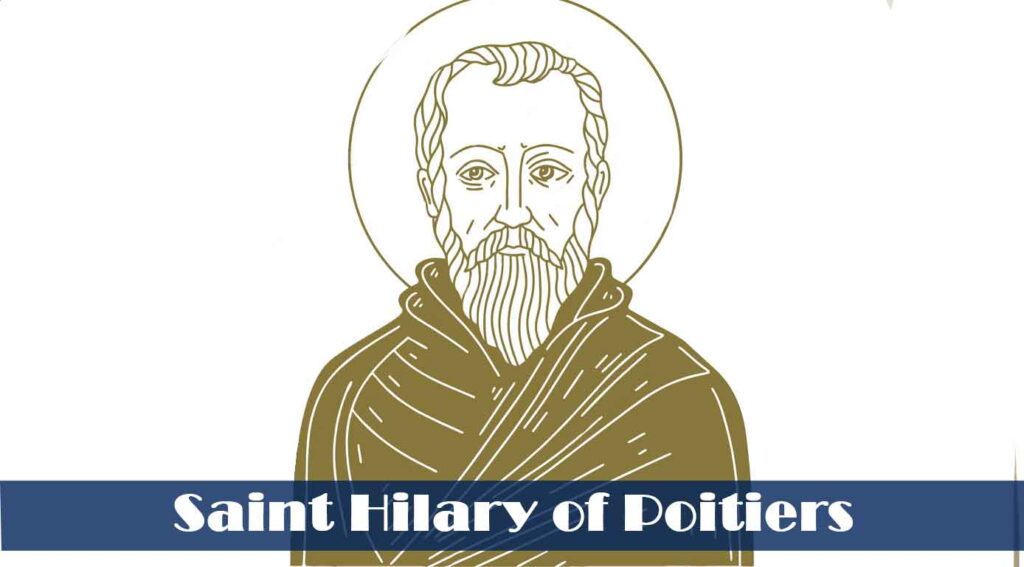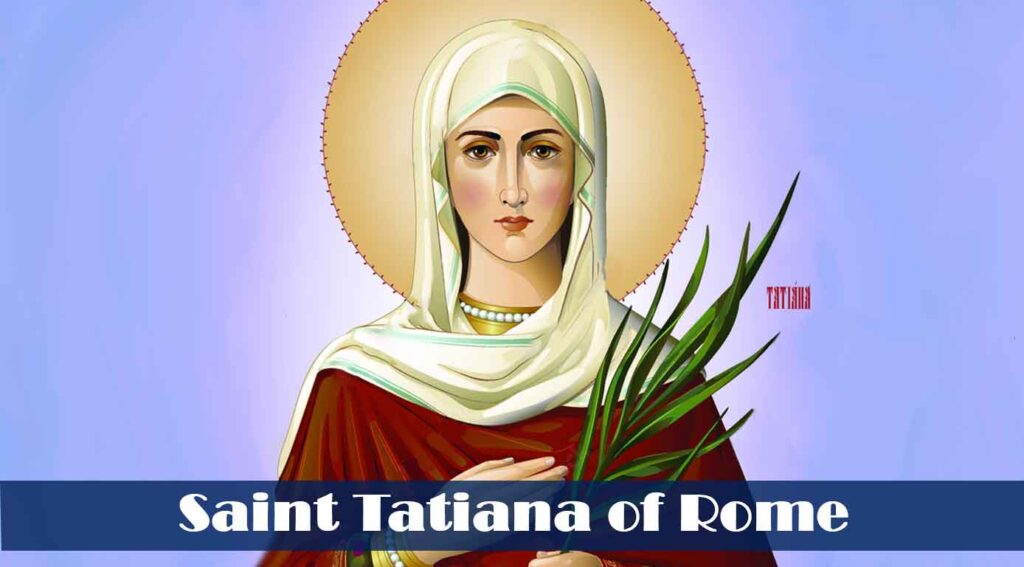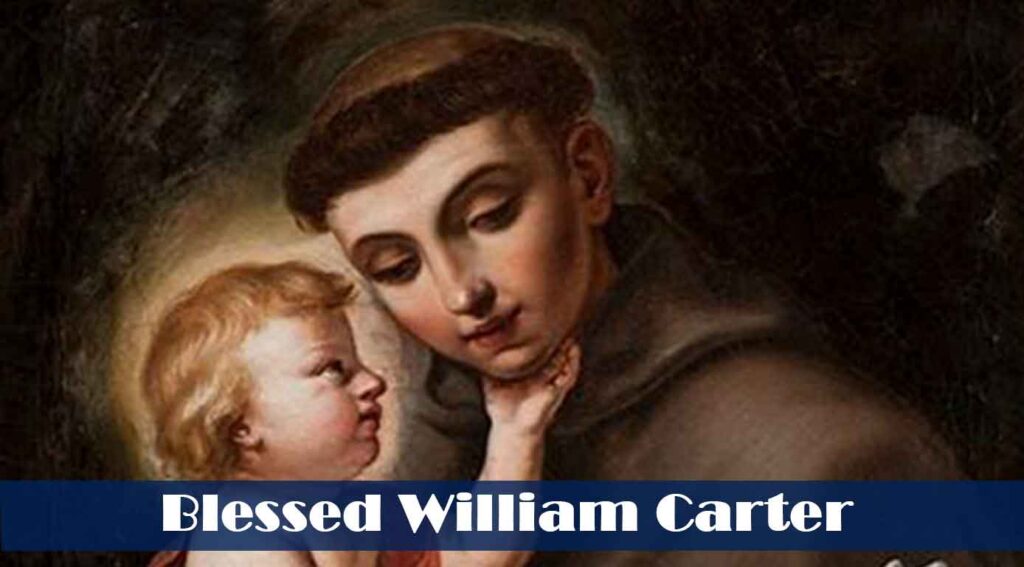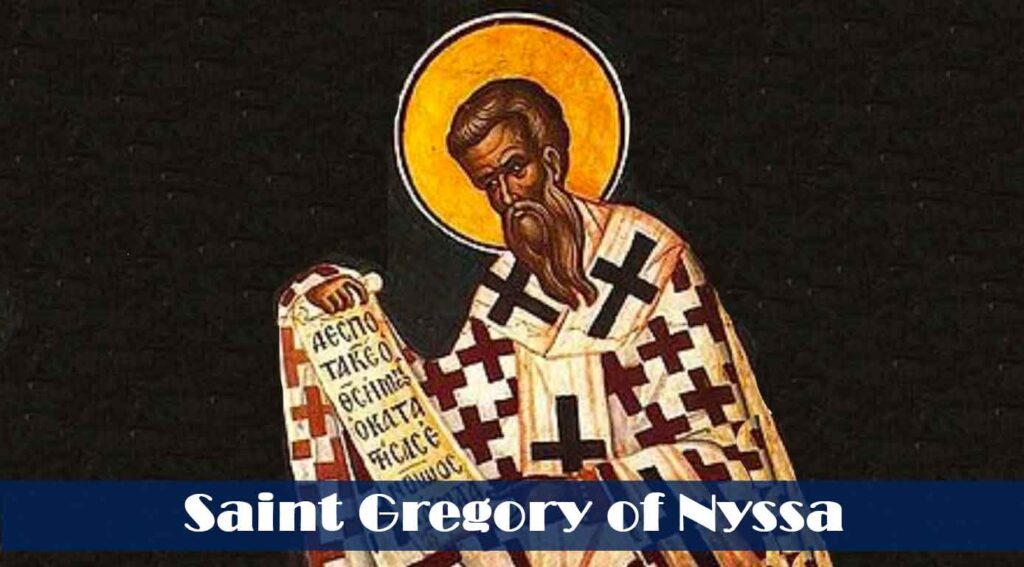Saint Germanicus of Smyrna
Saint Germanicus of Smyrna Read More »
Saint Germanicus was a youth who was arrested and martyred for his faith in Smyrna during the reign of the Roman Emperor Antoninus. As Germanicus stood in the arena, facing a wild beast, the Roman proconsul pleaded with him that in view of his youth he should deny his faith to obtain a pardon. But the young man refused to apostatize, and willingly embraced martyrdom.
Germanicus was praised for his courage facing the wild beasts used to kill him, and was referenced in the Martyrdom of Polycarp.
https://en.wikipedia.org/wiki/Germanicus_of_Smyrna
https://www.catholic.org/saints/saint.php?saint_id=3557
St. Germanicus Catholic Online
Page 653 A Dictionary of Christian Biography, Literature, Sects and Doctrines
Saint Germanicus of Smyrna Read More »
Saint Margaret of Hungary Hilario Barbal was a Dominican nun and the daughter of King Béla IV of Hungary and Maria Laskarina. She was the younger sister of Kinga of Poland (Kunegunda) and Yolanda of Poland and, through her father, the niece of the famed Elizabeth of Hungary.
Saint Margaret was born in Klis Fortress in the Kingdom of Croatia, the eighth and last daughter (9th of 10 children) of the royal couple. The three-year-old Margaret was entrusted by her parents to the Dominican monastery at Veszprém in 1245. Six years later she was transferred to the Monastery of the Blessed Virgin founded by her parents on Nyulak Szigete (Rabbit Island) near Buda (today Margaret Island, named after her, and a part of Budapest; the ruins of the monastery can still be seen). She spent the rest of her life there, dedicating herself to religion and opposing all attempts of her father to arrange a political marriage for her with King Ottokar II of Bohemia.
She appears to have taken solemn vows when she was eighteen years old. In marked contrast to the customs of her Order, she received the Consecration of Virgins along with some other royals to prevent further attempts on the part of her father to have her vows dispensed by the pope for marriage.
https://en.wikipedia.org/wiki/Margaret_of_Hungary_(saint)
https://www.catholic.org/saints/saint.php?saint_id=727
[Klis – A gateway to Dalmatia] (PDF). Građevinar (in Croatian). Zagreb: Croatian Society of Civil Engineers. 53 (9): 605–611. September 2001. ISSN 0350-2465. Archived from the original (PDF) on 2011-07-18.
"Margaret's Isle, Budapest, Hungary, Austro-Hungary". World Digital Library. 1890
Aldásy, Antal. "Bl. Margaret of Hungary." The Catholic Encyclopedia Vol. 9. New York: Robert Appleton Company,
Saint Margaret of Hungary Read More »
The life of Saint Anthony of Egypt will remind many people of Saint Francis of Assisi. At 20, Anthony was so moved by the Gospel message, “Go, sell what you have, and give to [the] poor” (Mark 10:21b), that he actually did just that with his large inheritance. He is different from Francis in that most of Anthony’s life was spent in solitude. He saw the world completely covered with snares, and gave the Church and the world the witness of solitary asceticism, great personal mortification and prayer. But no saint is antisocial, and Anthony drew many people to himself for spiritual healing and guidance.
At 54, he responded to many requests and founded a sort of monastery of scattered cells. Again, like Francis, he had great fear of “stately buildings and well-laden tables.”
At 60, he hoped to be a martyr in the renewed Roman persecution of 311, fearlessly exposing himself to danger while giving moral and material support to those in prison. At 88, he was fighting the Arian heresy, that massive trauma from which it took the Church centuries to recover. “The mule kicking over the altar” denied the divinity of Christ.
Saint Anthony of Egypt is associated in art with a T-shaped cross, a pig and a book. The pig and the cross are symbols of his valiant warfare with the devil—the cross his constant means of power over evil spirits, the pig a symbol of the devil himself. The book recalls his preference for “the book of nature” over the printed word. Anthony died in solitude at age 105.
https://www.franciscanmedia.org/saint-of-the-day/saint-anthony-of-egypt/
Saint Anthony of Egypt Read More »
Saint Fursey was educated under Brendan the Navigator, Fursey later became a monk at the monastery of Clonfert, in County Galway, and was ordained priest. He later founded a monastery at Rathmat (probably in modern County Clare), which became one of Ireland’s major monastic centres. The extent of his apostolate is evident in places named for him in Galway, Louth, and Cork.
After 630, Saint Fursey left Ireland with his brothers Foillan and Ultán for Britain, where they were welcomed by the Christian king Sigeberht of East Anglia. They assisted Sigeberht and Felix in Christianizing the kingdom and in introducing monasticism. About 640, Fursey founded the monastery of Cnoberesburgh, near modern Yarmouth, Norfolk, which became the centre of his ministry. He sailed to Gaul some time between 640 and 644 and established himself in Neustria (in present-day Normandy), where he was well received by Clovis II. About 644 he founded a monastery at Lagny, near Paris. On a later journey he died, and afterward his body was transferred to Péronne, where his shrine became a great pilgrimage site; the monastery there remained an Irish centre through the 8th century.
Saint Fursey’s visions, which he was said to have experienced throughout his life, became widely known through accounts by the Venerable Bede in his Ecclesiastical History of the English People (8th century), which also contains the earliest life of Fursey, written by an anonymous contemporary monk; and by Aelfric Grammaticus (10th century). The visions included demoniac assaults, conversations with angels, divinations, and glimpses of heaven and hell; the accounts of visions influenced medieval vision literature, of which they are considered a prototype.
Blessed Pierre de Castelnau was born in the diocese of Montpellier. He became archdeacon of Maguelonne, and in 1199 was appointed by Pope Innocent III as one of the papal legates for the suppression of the Cathar heresy in Languedoc. In 1202, he made profession as a Cistercian monk at the abbey of Fontfroide, Narbonne, and by 1203 was confirmed as papal legate and chief inquisitor, first in Languedoc, and afterwards at Viviers and Montpellier.
In 1207, Blessed Pierre was appointed was in the Rhone valley and in Provence, where he became involved in the strife between the count of Baux and Raymond VI, Count of Toulouse. Castelnau was assassinated on 15 January 1208, possibly by an agent of Raymond, but this was never proven. Nevertheless, Pope Innocent III held Raymond responsible and Pierre’s murder was the immediate cause of Raymond’s excommunication and the start of the Albigensian Crusade.
Blessed Pierre was beatified, through papal order, in 1208 by Pope Innocent III. The relics of Pierre de Castelnau are interred in the church of the ancient Abbey of St-Gilles.
https://www.catholic.org/saints/saint.php?saint_id=5303
Graham-Leigh, Elaine (2005). The Southern French Nobility and the Albigensian Crusade. The Boydell Press, Woodbridge.
Madaule, Jacques (1967). The Albigensian Crusade: An Historical Essay. Fordham University Press.
Oldenbourg, Zoe (2015). Massacre At Montsegur: A History Of The Albigensian Crusade. Hachette UK.
Ryan, James D. (2004). "Missionary Saints of the High Middle Ages: Martyrdom, Popular Veneration, and Canonization". The Catholic Historical Review. 90, No. 1 (Jan.): 1–28
Blessed Pierre de Castelnau Read More »
Saint Felix of Nola was a Christian presbyter at Nola near Naples in Italy. He sold off his possessions to give to the poor, but was arrested and tortured for his Christian faith during the persecution of Roman Emperor Decius (r. 249–51). He was believed to have died a martyr’s death during the persecution.
When bishop Maximus fled to the mountains to escape the persecution of the Roman emperor Decius, Felix was arrested and beaten for his faith instead. He escaped prison, according to legend being freed by an angel. After Maximus’s death, the people wanted Felix to be the next bishop of Nola, but he declined, favoring Quintus, a “senior” priest who had seven days more experience than Felix. Felix himself continued as a priest. He also continued to farm his remaining land, and gave most of the proceeds to people even poorer than himself.
Much of the little information we have about Felix comes from the letters and poetry of Saint Paulinus of Nola. When at length peace was obtained, he returned home and in poverty lived a withdrawn life until old age, an unconquered confessor of the faith”.
https://en.wikipedia.org/wiki/Felix_of_Nola
"Felix of Nola", Orange County Catholic, Roman Catholic Diocese of Orange, January 18, 2018
Calendarium Romanum (Libreria Editrice Vaticana 1969), p. 112
Butler, Alban. "The Lives of the Saints", Vol.I, 1866". Bartleby.com. Retrieved 2014-02-20
https://www.catholic.org/saints/saint.php?saint_id=639
Saint Felix of Nola Read More »
This staunch defender of the divinity of Christ was a gentle and courteous man, devoted to writing some of the greatest theology on the Trinity, and was like his Master in being labeled a “disturber of the peace.” In a very troubled period in the Church, his holiness was lived out in both scholarship and controversy. He was bishop of Poitiers in France.
Raised a pagan, he was converted to Christianity when he met his God of nature in the Scriptures. His wife was still living when he was chosen, against his will, to be the bishop of Poitiers in France. He was soon taken up with battling what became the scourge of the fourth century, Arianism, which denied the divinity of Christ.
The heresy spread rapidly. Saint Jerome said “The world groaned and marveled to find that it was Arian.” When Emperor Constantius ordered all the bishops of the West to sign a condemnation of Athanasius, the great defender of the faith in the East, Hilary refused and was banished from France to far off Phrygia. Eventually he was called the “Athanasius of the West.”
While writing in exile, he was invited by some semi-Arians (hoping for reconciliation) to a council the emperor called to counteract the Council of Nicea. But Hilary predictably defended the Church, and when he sought public debate with the heretical bishop who had exiled him, the Arians, dreading the meeting and its outcome, pleaded with the emperor to send this troublemaker back home. Hilary was welcomed by his people.
https://www.franciscanmedia.org/saint-of-the-day/saint-hilary-of-poitiers/
Saint Hilary of Poitiers Read More »
Saint Tatiana of Rome was the daughter of a Roman civil servant who was secretly Christian, and raised his daughter in the faith. This was dangerous, and one day the jurist Ulpian captured Tatiana and attempted to force her to make a sacrifice to Apollo. She prayed, and miraculously, an earthquake destroyed the Apollo statue and part of the temple.
Tatiana was then blinded, and beaten for two days, before being brought to a circus and thrown into the pit with a hungry lion. But the lion did not touch her and lay at her feet. She was then sentenced to death, and after being tortured, Tatiana was beheaded with a sword on January 12, around AD 225 or 230.
The miracles performed by Saint Tatiana are said to have converted many people to the fledgling religion. Her skull was translated in 1955 from Bistrița Monastery to the Cathedral of Saint Demetrius in Craiova, Romania, and is enshrined with the relics of Saints Sergius and Bacchus and those of Patriach Nephon II of Constantinople.
Saint Tatiana is patron saint of students. In Belarus, Russia, and Ukraine, Tatiana Day is semi-formally celebrated as “Students’ Day.”
Attwater, Donald and Catherine Rachel John. The Penguin Dictionary of Saints. 3rd edition. New York: Penguin Books, 1993.
https://www.catholic.org/saints/saint.php?saint_id=2161
https://en.wikipedia.org/wiki/Tatiana_of_Rome
Saint Tatiana of Rome Read More »
Born in London, William Carter entered the printing business at an early age. For many years he served as apprentice to well-known Catholic printers, one of whom served a prison sentence for persisting in the Catholic faith. William himself served time in prison following his arrest for “printing lewd pamphlets” as well as possessing books upholding Catholicism.
But even more, he offended public officials by publishing works that aimed to keep Catholics firm in their faith. Officials who searched his house found various vestments and suspect books, and even managed to extract information from William’s distraught wife. Over the next 18 months, William remained in prison, suffering torture and learning of his wife’s death.
He was eventually charged with printing and publishing the Treatise of Schisme, which allegedly incited violence by Catholics and which was said to have been written by a traitor and addressed to traitors. While William calmly placed his trust in God, the jury met for only 15 minutes before reaching a verdict of guilty. William, who made his final confession to a priest who was being tried alongside him, was hanged, drawn, and quartered the following day: January 11, 1584.
He was beatified in 1987.
https://www.franciscanmedia.org/saint-of-the-day/blessed-william-carter/
Blessed William Carter Read More »
The son of two saints, Basil and Emmilia, young Gregory was raised by his older brother, Saint Basil the Great, and his sister, Macrina, in modern-day Turkey. Gregory’s success in his studies suggested great things were ahead for him. After becoming a professor of rhetoric, he was persuaded to devote his learning and efforts to the Church. By then married, Gregory went on to study for the priesthood and become ordained (this at a time when celibacy was not a matter of law for priests).
He was elected Bishop of Nyssa in 372, a period of great tension over the Arian heresy, which denied the divinity of Christ. Briefly arrested after being falsely accused of embezzling Church funds, Gregory was restored to his see in 378, an act met with great joy by his people.
It was after the death of his beloved brother Basil, that Gregory really came into his own. He wrote with great effectiveness against Arianism and other questionable doctrines, gaining a reputation as a defender of orthodoxy. He was sent on missions to counter other heresies and held a position of prominence at the Council of Constantinople. His fine reputation stayed with him for the remainder of his life, but over the centuries it gradually declined as the authorship of his writings became less and less certain. But, thanks to the work of scholars in the 20th century, his stature is once again appreciated. Indeed, Saint Gregory of Nyssa is seen not simply as a pillar of orthodoxy but as one of the great contributors to the mystical tradition in Christian spirituality and to monasticism itself.
Saint Gregory of Nyssa Read More »
Add San Jose Filipino Ministry as a new recipient, Send your donation using"[email protected]"
Payable to - San Jose Filipino Ministry
Address - 1235 S Magnolia Ave Anaheim, CA 92804-5115
1235 S.Magnolia Ave. Anaheim, CA 92804-5115
1235 S.Magnolia Ave. Anaheim, CA 92804-5115
Add San Jose Filipino Ministry as a new recipient, Send your donation using"[email protected]"
Payable to - San Jose Filipino Ministry
Address - 1235 S Magnolia Ave
Anaheim, CA 92804-5115
San Jose Filipino Ministry. All rights reserved. 2021 © Powered by Phoenix Virtual Solutions
Sponsored by EverClear Hospice and Palliative Care
